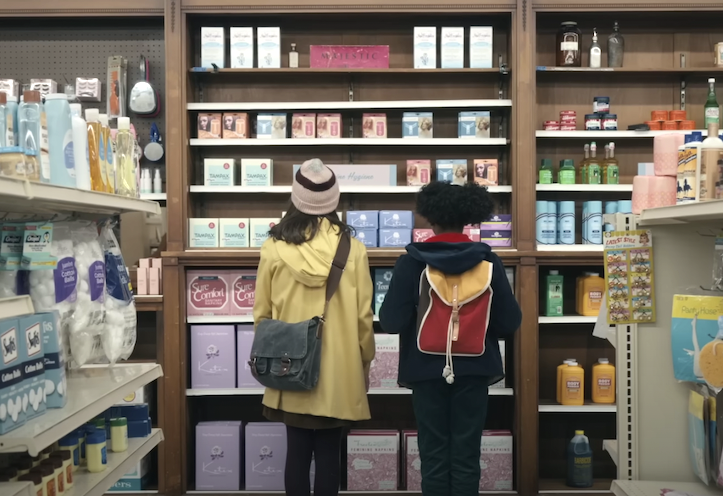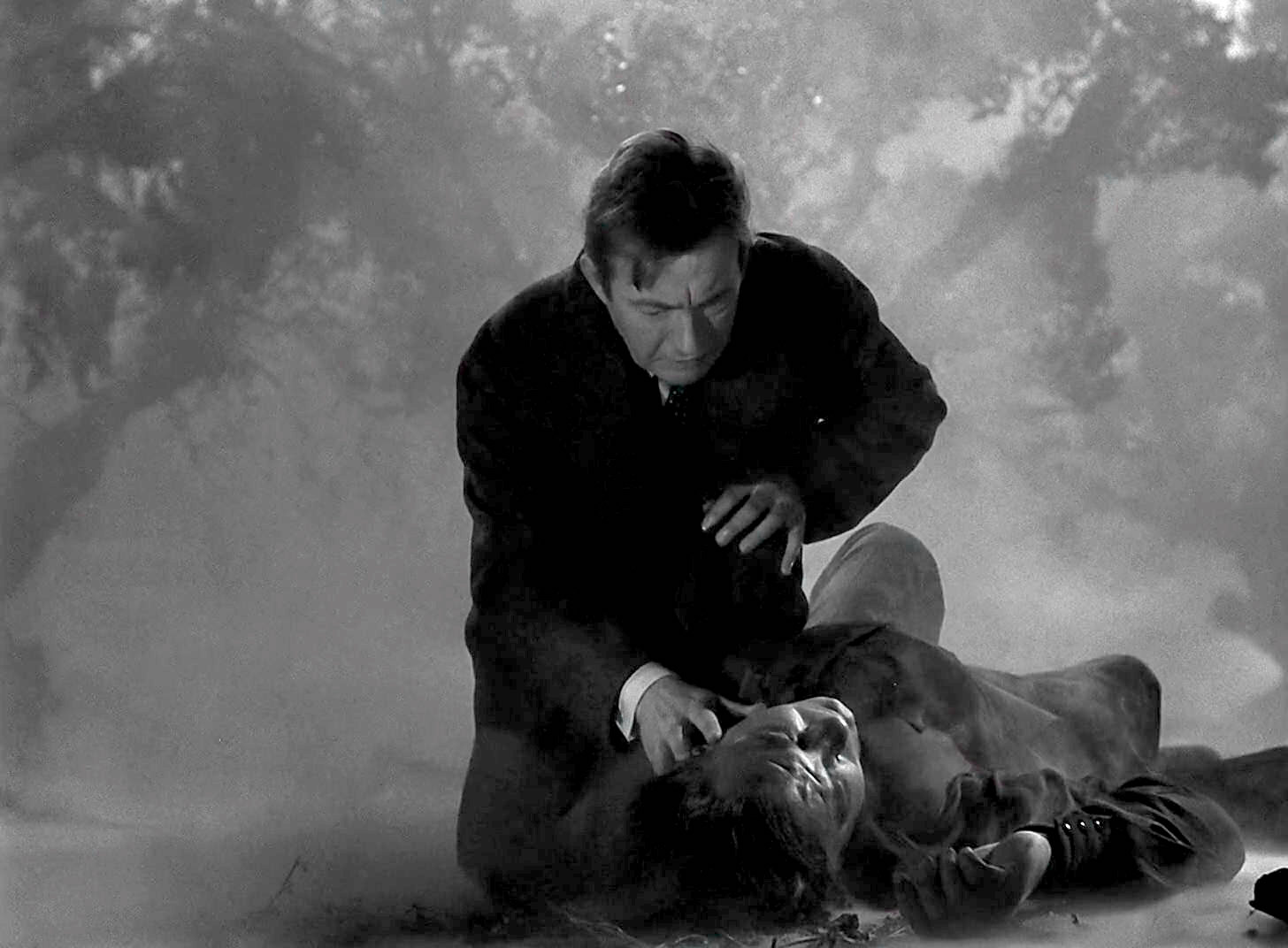Books & Culture
Why We Still Need Aunt Beast
The gentle alien doesn’t show up in the film of ‘A Wrinkle in Time,’ but she was crucial to the book—and the misfit girls who loved it

From the moment the Wrinkle in Time movie was announced, my eye was on one thing: Aunt Beast. How would this character — who looks like a furry, grey, tentacled monster, but who is the essence of warmth and love and care — come across on screen? I dissected the trailers for clues, zeroed in on a flash of lumbering grey behemoths, faceless and soft. That’s not the Aunt Beast I know, but it must be her. I begged film critic friends to bring me word of her. When the film’s social media embargo lifted, I tweeted: “SOMEONE TELL ME IS AUNT BEAST OKAY.”
It wasn’t that I needed the adaptation to be faithful. From the first images released, we knew it was not, and frankly, I was relieved. If I ever imprinted on a book, it was this one, but I was intrigued by how different Ava DuVernay’s vision was from my own: the Mrs. Ws not spooky old women but futuristic glamor-witches, with polychrome hair and every color of glittering lipstick; the Happy Medium not a sleepy woman but a man-bunned Zach Galifiniakis; the entire bright, Disney air. The distance meant I could enjoy the movie in isolation. If the movie was different, it wouldn’t ruin the book. It would just be a sister-story to the story I’ve always loved.
She’s an angry, stubborn, frustrated girl, and she doesn’t transcend those failings in order to triumph. In fact, she can’t triumph without them.
But I needed Aunt Beast. It didn’t occur to me that she might be cut — not because she’s crucial to the book’s plot, but because she’s crucial to its heart. The whole book tells us that messy, angry, stubborn girls can save the day. But Aunt Beast tells us that those problem girls can also be loved.
The tagline of the movie is “be a warrior,” but the Meg Murry I remembered from the book isn’t a hero because she’s brave or noble, the warrior that she will presumably rise to be. She’s a hero because of her flaws. She’s an angry, stubborn, frustrated girl, and she doesn’t transcend those failings in order to triumph. In fact, she can’t triumph without them. That’s the whole point.
At the beginning of the book of A Wrinkle in Time, Meg hates herself. She’s got frizzy hair, glasses, braces, and a perpetual sense that she’s wrong — she does poorly in her classes and can’t manage to fit in, unable to squelch her temper with classmates or bullies or the school principal (who calls her “the most belligerent, uncooperative child in school.”) Her mother and her baby brother, Charles Wallace, love her, but Meg says, “I wish I were a different person. I hate myself.”
Then three mysterious, supernatural women — Mrs. Whatsit, Mrs. Which, and Mrs. Who — show up to take Meg, Charles Wallace, and Meg’s schoolmate Calvin on a quest to rescue the Murrys’ missing father. He disappeared while experimenting with traveling by tesseract, folding (or wrinkling) space to traverse great distances instantaneously. The Mrs. Ws tell the children that there is a darkness in the universe, and that this is what their father is fighting, but he is trapped within it now. Earth is, so far, merely shadowed, but there are entire planets that have lost their battle against the Dark Thing.
When the children come to Camazotz, the dark planet where Meg’s father is imprisoned, the Mrs. Ws cannot go with them, but they send the children on their way with gifts. The gifts are mostly enigmatic: a pair of glasses, a hint in a rhyme. As in the movie, Mrs. Whatsit says to Meg, “I give you your faults.”
“My faults!” Meg cried.
“Your faults.”
“But I’m always trying to get rid of my faults!”
“Yes,” Mrs. Whatsit said. “However I think you’ll find they’ll come in very handy on Camazotz.”
Meg’s faults are the reason she’s been a beacon for so many generations of girls. She is angry, frustrated, impatient, self-loathing, and most of all stubborn. A decade ago, Lizzie Skurnick wrote an ode to the stubbornness of Meg Murry at Jezebel:
[Meg] discovers that her stubbornness about what she knows is right is her greatest strength. It’s not really her love for her brother that saves him and her father and herself from being taken over by the Dark Thing. It’s her faults (anger, impatience, stubbornness) that keep her from being sucked in by the great throbbing brain telling her to fall in line. … And, as unattractive as those traits are to others, Meg’s faults amount to no less than a belief in herself. And, as Mrs. Who says: Justitae soror vides — faith is the sister of justice.
Those traits, given back to Meg like a benediction by Mrs. Whatsit, allow Meg to save herself and Charles Wallace. But recognizing that your flaws can be leveraged into strength isn’t enough to make you stop hating yourself, enough to let you stop listening to everything that tells you that you’re wrong. Meg has to learn that she is strong because of her faults, but she also has to learn that they make her no less worthy of love.
Meg learns from Aunt Beast not only that she can keep fighting, but that she should.
This is where Aunt Beast comes in. In the book, Meg’s father tessers himself, her, and Calvin out of Camazotz to the first non-dark planet he can find, after a failed attempt to save Charles Wallace. (He’s left Charles Wallace behind not out of callousness but because tearing him away from IT, the malign consciousness that controls the planet, might have killed him.) Tessering through the Dark Thing, which envelops Camazotz, is painful and dangerous; Meg, ever the worst at tessering, lands there weakened by her battle with the darkness, on the verge of being lost to it.
She is furious. She is heartbroken. She’s in the grip of the Dark Thing, yes, but these feelings are Meg’s own, too, because she is a furious and heartbroken girl. And Aunt Beast heals her — with food and rest and care, and also with love. Aunt Beast loves Meg even when Meg is raging, and in doing so gives her the strength to go back to Camazotz, to return to the fight. Meg already had stubbornness, but that alone isn’t always enough to keep fighting. Meg learns from Aunt Beast not only that she can keep fighting, but that she should. When she realizes she is the only one who can save Charles Wallace, first she has a tantrum, crying at the unfairness of it all. But then a surprising peace comes over her, and she understands: “It can’t be anyone else. I don’t understand Charles, but he understands me.” She doesn’t understand herself, either. But she understands, thanks to Aunt Beast, that she can be loved at her worst.
I don’t remember what I thought of Aunt Beast the first time I read A Wrinkle in Time, but I know what she’s come to mean to me in the decades and rereads since. When Meg first sees her, she’s repulsed by the monstrous alien as it reaches out to touch her face. “But with the tentacle came the same delicate fragrance that moved across her with the breeze, and she felt a soft, tingling warmth go all through her that momentarily assuaged her pain.” I’m not Christian, so my understanding here is limited, but I think Aunt Beast is the embodiment of grace.
No matter how monstrous and wrong we are, there’s another monster out there who may love us, despite and because.
When I was eight and read this book for the first time, when I was twelve and raised my hand too often in class, when I was fifteen and fighting with my mother, when I was every age I’ve ever been and felt in whatever way that I was wrong in the world, when I was stubborn like Meg Murry and all I wanted was for how I was to be okay, Aunt Beast has always been a beacon. No matter how monstrous and wrong we are, there’s another monster out there who may love us, despite and because.
One of the film’s two screenwriters, Jennifer Lee, told The Mary Sue:
She was there until the very end. Maybe she’ll show up in the DVD. It was the right thing for the film version. Meg needed to walk into the It’s lair without support. Aunt Beast was a part of the book that provided support, but she also provided the answer. This was a journey we reworked, where no one is gonna give Meg the answer. She has to find it herself.
But Aunt Beast doesn’t provide answers, really. She provides healing. The movie’s tagline is “be a warrior,” but only the book’s Meg is ever really wounded — not physically, but psychically intruded upon by the Dark Thing.
IT, the dark sovereign of Camazotz, is not the origin of the darkness in the book’s world, as he seems to be in the movie; he is only one node of its power. That power pervades Camazotz as a throbbing rhythm, one that seduces your breath and thoughts and hearts to fall in line. And that’s the nature of the darkness on Camazotz: conformity. Submission to sameness. “Nobody suffers here,” Charles Wallace tells Meg under the grip of IT. “Nobody is every unhappy.” The Dark Thing is not vaguely “darkness,” it is a specific evil on Camazotz — one that Meg Murry, full of rage for the ways she has never fit in, is uniquely suited to fight.
It’s Mrs. Which, in the book, who gives Meg the answer, in her spooky whisper: “Yyou hhave ssomethinngg thatt ITT hhass nnott. Thiss ssomethingg iss yyourr onlly wweapponn. Bbutt yyou mmusstt ffinndd itt fforr yyourrssellff.” That something, Meg realizes, is love: Mrs. Whatsit’s and her father’s and and her mother’s and her brothers’ — and Aunt Beast’s.
She realizes, “If she could give love to IT perhaps it would shrivel up and die, for she was sure that IT could not withstand love.” But Meg isn’t able to do it:
But she, in all her weakness and foolishness and baseness and nothingness, was incapable of loving IT. Perhaps it was not too much to ask of her, but she could not do it.
But she could love Charles Wallace.
She does, and she saves him, even as she is weak and foolish and base. These faults don’t have to stand in the way of loving, or of being loved; perhaps Aunt Beast doesn’t teach Meg this, but she reminds her. Anyway, she reminded me. Watching the film, I wasn’t thinking about whether or not anyone gave Meg the answers. I was watching how she was loved. How her mother ached for her suffering, how the Happy Medium gave her patience, how Mrs. Who waited for her when she fell behind. But through it all, Meg had to be strong — good, brave, unfailing. I missed seeing her fall apart. I missed her flailing in a tantrum at Aunt Beast’s implacable body, I missed Aunt Beast standing there “quietly against the assault.” And I missed Aunt Beast standing beside Meg, when she decided she would risk her life, alone for her brother. “This time,” L’Engle writes, “Aunt Beast’s arm went around her.”








